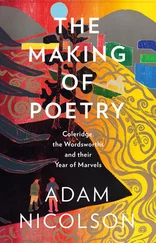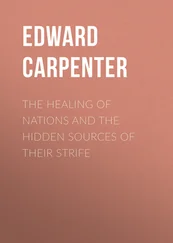When I had finally located the bird and attempted to match him up with his picture in the book, Mr. Rett and I were a quarter of a mile apart. In the intervening space the rest of the group were strung out like mismatched beads.
Some of the types I was to meet on many future birding trips were represented in the class. There were the Eaters, and though they carried binoculars, field guides, notebooks and extra sweaters and sun hats, they always managed to hold a sandwich. There were also the Talkers, and though some of them looked quite young in years, their life histories already seemed inordinately long.
Then there were the Shutterbugs, a busy lot indeed. They took pictures of the Old Mission and the Old Mission dam, each other, members of the class getting into cars and getting out of cars, Mr. Rett pointing west, Mr. Rett pointing south, Mr. Rett pointing east by northeast. A person examining the entire collection of pictures taken during those two weeks would be lucky if he found a single clue that the class was about birds.
Such a group would have proved most disheartening to Mr. Rett as a teacher if he had taken it seriously, so he didn’t. At least he didn’t until that morning at the Botanic Garden when he stopped at the bridge over the creek. Three members of the class stopped with him — myself, out of breath from sprinting to catch up after the last pause, a shutterbug who used the bridge railing to park her gear while she changed film, and a little old lady I couldn’t remember seeing the previous day. She had a soft, benevolent smile and pure white hair which was drawn back in a simple bun at the nape of her neck. She wore a khaki skirt, a long-sleeved plaid cotton shirt with matching hat and a pair of navy blue sneakers. It was the kind of versatile outfit an outdoor person needs to be comfortable in our area where there is a wide range of temperature in any twenty-four hour period — a cold, foggy dawn, a hot noon sun, a brisk sea wind in the afternoon.
She also wore, suspended on a strap from her right shoulder, a leather bag where she kept some obviously old, German-made binoculars and a field guide protected by a plastic wrapper. Across the top of the wrapper, in black marking pencil, was printed the word beals. The make and condition of her binoculars, if nothing else, should have tipped Mr. Rett off. Perhaps a succession of Eaters, Talkers and Shutterbugs had dulled his perceptions. Anyway, he was unprepared for beals.
“There used to be a canon wren living around these boulders,” Mr. Rett said. “Let’s see if he’s still here.”
He whistled the wren’s song and the sound of it was so piercingly beautiful that even some of the Talkers paused to listen. A few seconds later Mr. Rett’s answer came from the creek.
The degree of success in translating a bird song into human syllables depends on the listening ear, certainly, but also on the song itself. That of the yellow warbler sounds to my ears like see see see see, witty me. But even in the case of a simple song like this one, there are differences in the ways it is translated by various people: R. T. Peterson hears it as tsee-tsee-tsee-tsee-titi-wee, George Gladden as sweet, sweet, sweet, sweeter, sweeter , Ralph Hoffman as tsee, tsee, tsee, tsitsi wee see .
In the case of a much more complicated song like the canon wren’s, the range of differences widens. Peterson calls it “a gushing cadence of clear curved notes tripping down the scale,” with which I agree; but then he interprets it as te-you, te-you, te-you tew tew tew , which is surely inadequate. Hoffman despaired of translation and used description instead: “. . the cañon wren pours out a cascade of sweet liquid notes, like the spray of a waterfall in sunshine.” Perhaps W. L. Dawson gives the best impression of the song, not in the syllables he chose, which seem more pharmaceutical than faithful, but in the way he wrote them:
cuick
cuick
cuick
para
para
goric
goric
goric poozt teetl
Mr. Rett kept imitating the canyon wren in an attempt to bring him out into the open where we could all see him. The trick didn’t work that day, and the little singer remained hidden behind his boulder. (This same boulder is the site of a wrenery every spring, and if you’re lucky, you can catch the young ones in the act of practicing their songs.)
Meanwhile another small brownish bird landed on a sycamore branch hanging out over the water. Merely the way it sat, motionless, erect, alert, would have indicated to a novice bird watcher that it was a flycatcher. But I wasn’t even a novice yet, and all it meant to me was one more clumsy search through the field guide for one more small brownish bird.
Mr. Rett identified it, for anyone who was interested, as a Traill’s flycatcher.
Immediately beals lowered her binoculars and raised her eyebrows. “It’s an Empidonax, certainly. But Traill’s? — how can you be sure?”
For a few seconds Mr. Rett looked too stunned to reply. Then he said, “I know a Traill’s when I see one.”
“Really? Some people, some quite knowledgeable people, in fact, are content to call the whole group Empidonax and let it go at that.”
She turned away with an elaborate shrug. It was the kind of gesture I’d seen performed in court when a lawyer was attempting to cast doubt in the minds of the jury about a witness’s credibility.
The jury, in this case, wasn’t paying much attention. Some were out to lunch, some were discussing more important topics such as themselves, and the two lone men in the group had found a sunny redwood bench to sprawl out on and were, to all intents and purposes, asleep. That left me, still plodding through the field guide in search of small brownish birds. I was beginning to suspect that the day was still far distant when I could pronounce and spell Empidonax let alone identify one. Obviously I needed a system, some way of knowing which of the sixty color plates in the book would most likely contain the bird I was searching for. (During the first year of bird watching, my field guide was reduced to a handful of loose, limp sheets of paper. The one I’m currently using is my third.)
My efforts, involving as they did considerable paper-rattling, groans of frustration and muttered maledictions, did not go unnoticed.
“What on earth are you doing?” Mrs. Beals said.
“Trying to find a picture of that bird.”
“What bird?”
I couldn’t point, since by this time the bird had moved. I couldn’t remember the word Empidonax and it would have been rather tactless to call it a Traill’s flycatcher, so I said, “The one Mr. Rett believed to be a Traill’s flycatcher.”
“Why shouldn’t he believe it? It was.”
“But you—”
“Even the experts must be kept on their toes. Unless they’re challenged now and then, they tend to get sloppy or take things for granted.”
It turned out that Marie Beals was something of an expert herself: at her place on Long Island she had banded more than 15,000 birds!
Mrs. Beals pointed out to me my basic mistake. For every minute I spent studying a bird, I was spending ten minutes looking at the book.
“Try reversing this. You’ll have plenty of time later to study the book. It won’t fly away. The bird will.”
In fact, it already had. But a minute later I located it on the jutting branch of an elderberry.
“Now,” Mrs. Beals said, “suppose you look at the bird not as an object that must be matched up with a picture in a book, but as a living creature intent on survival. What is he doing?”
“Well, he seems to be staring down at the water at his own reflection.”
Читать дальше
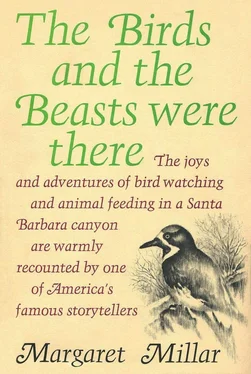
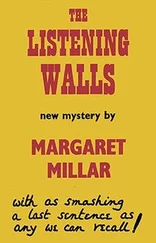
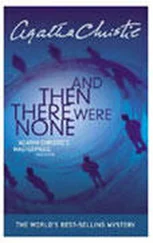
![Маргарет Миллар - Rose's Last Summer [= The Lively Corpse]](/books/384369/margaret-millar-rose-s-last-summer-the-lively-c-thumb.webp)

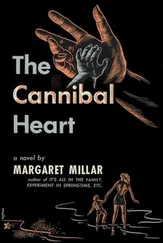
![Маргарет Миллар - The Iron Gates [= Taste of Fears]](/books/433837/margaret-millar-the-iron-gates-taste-of-fears-thumb.webp)


